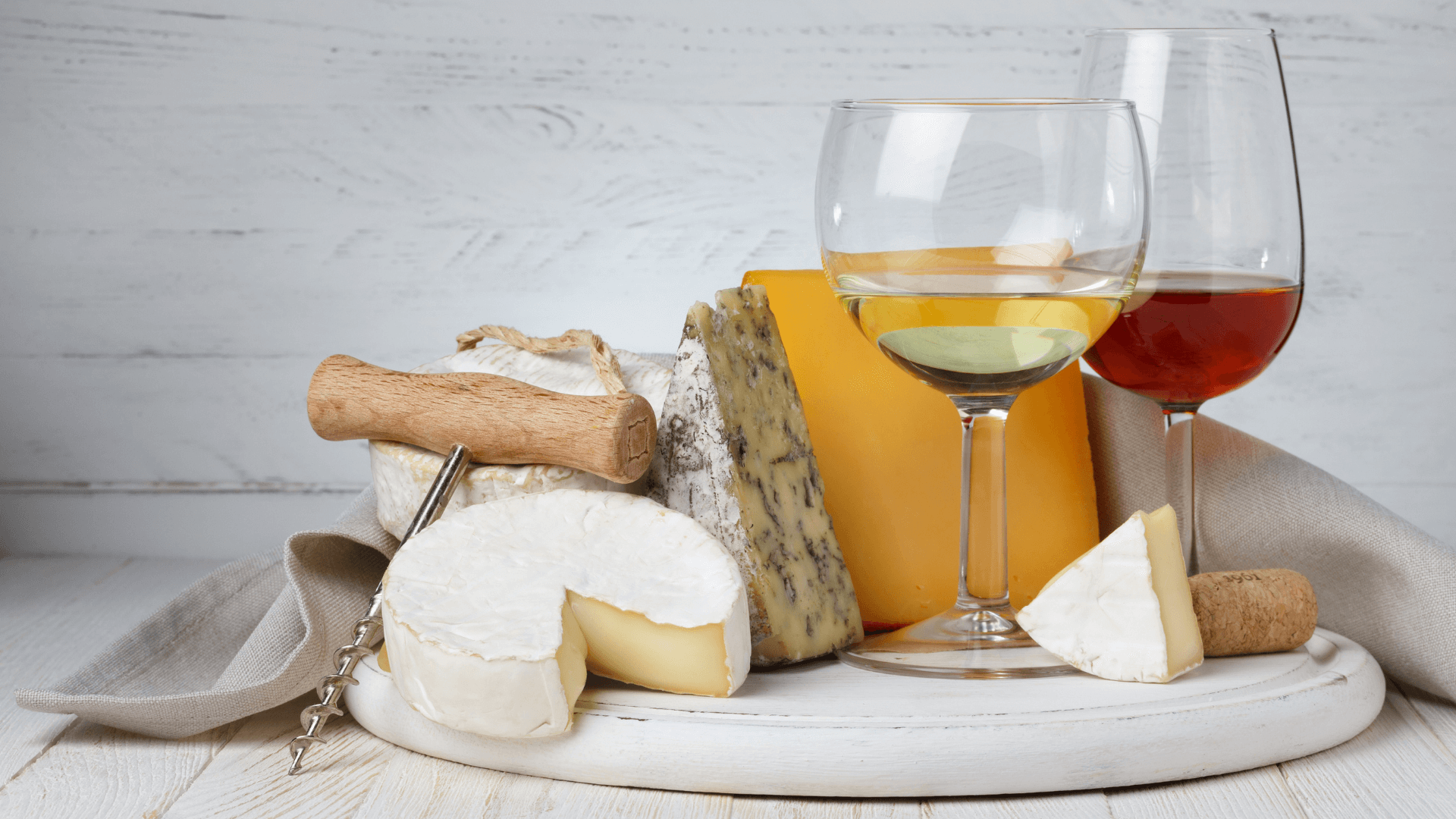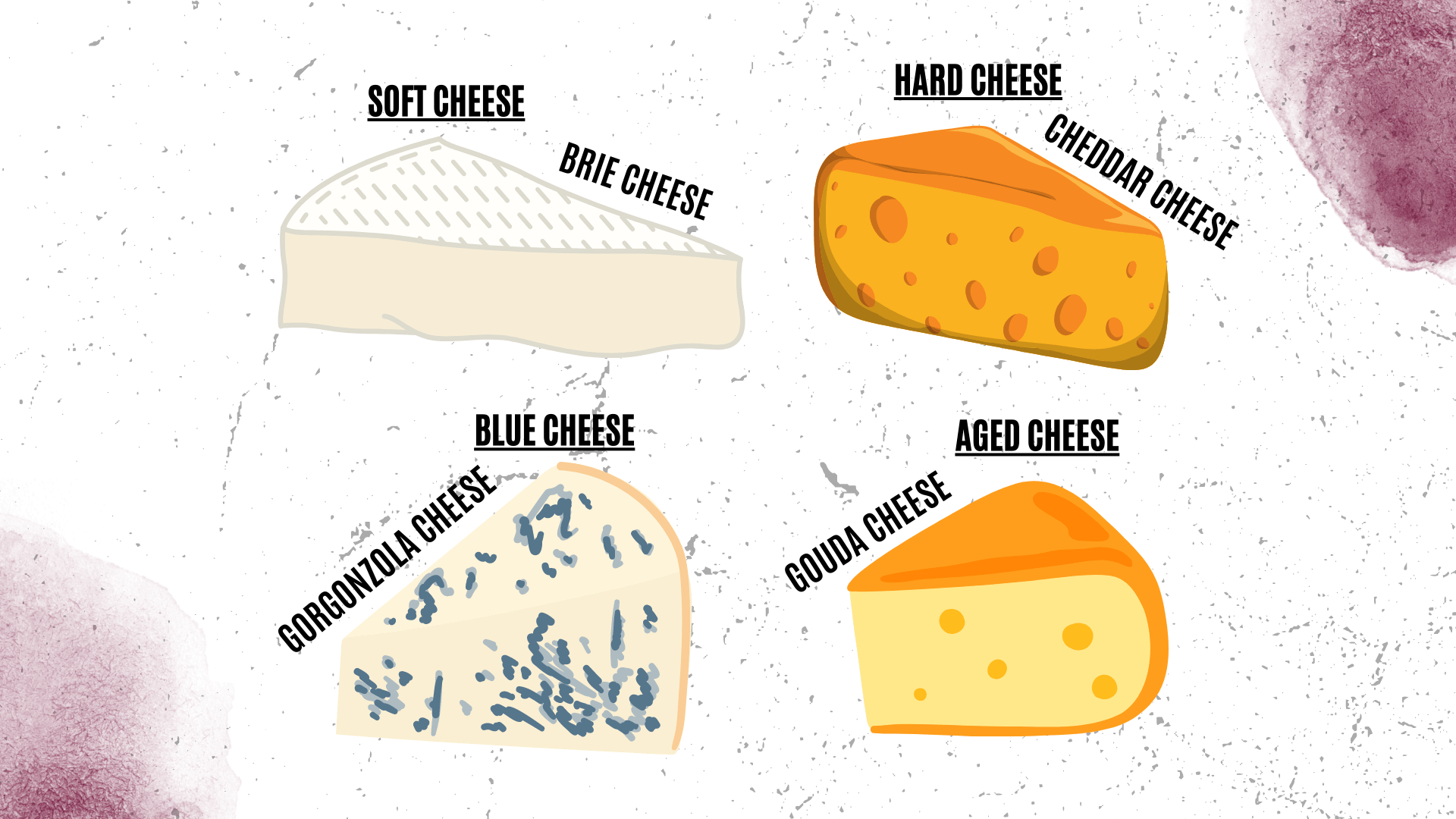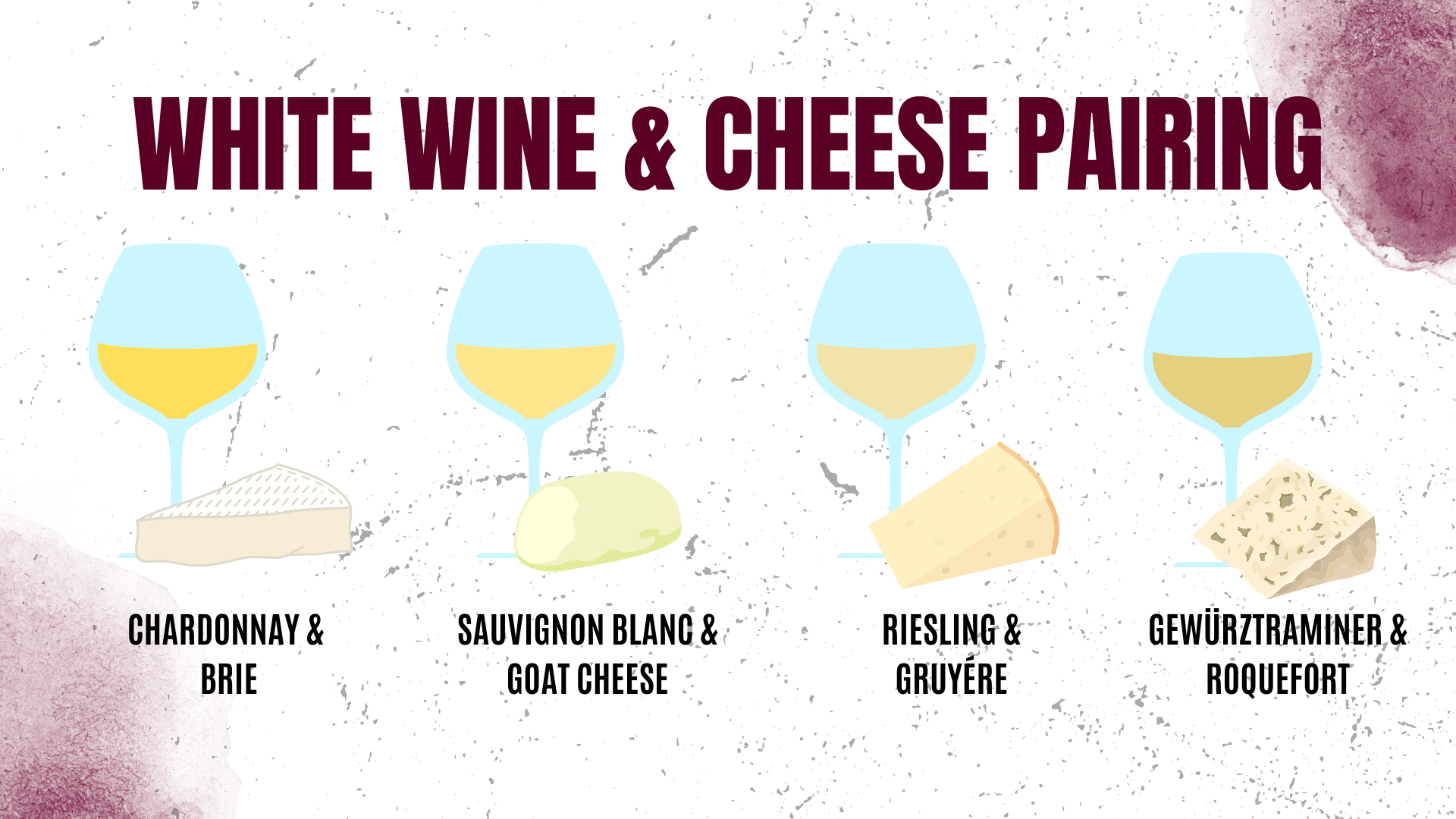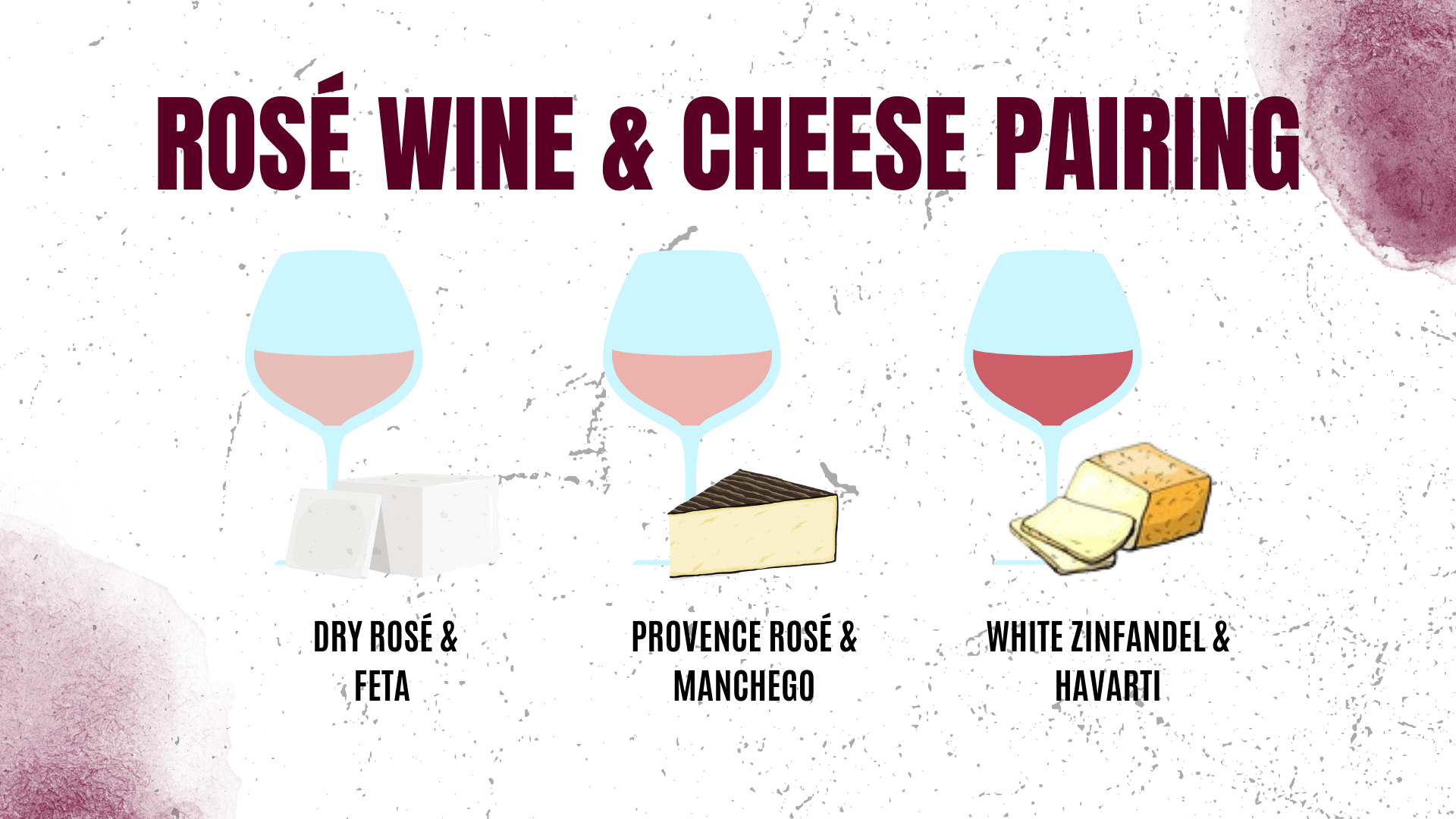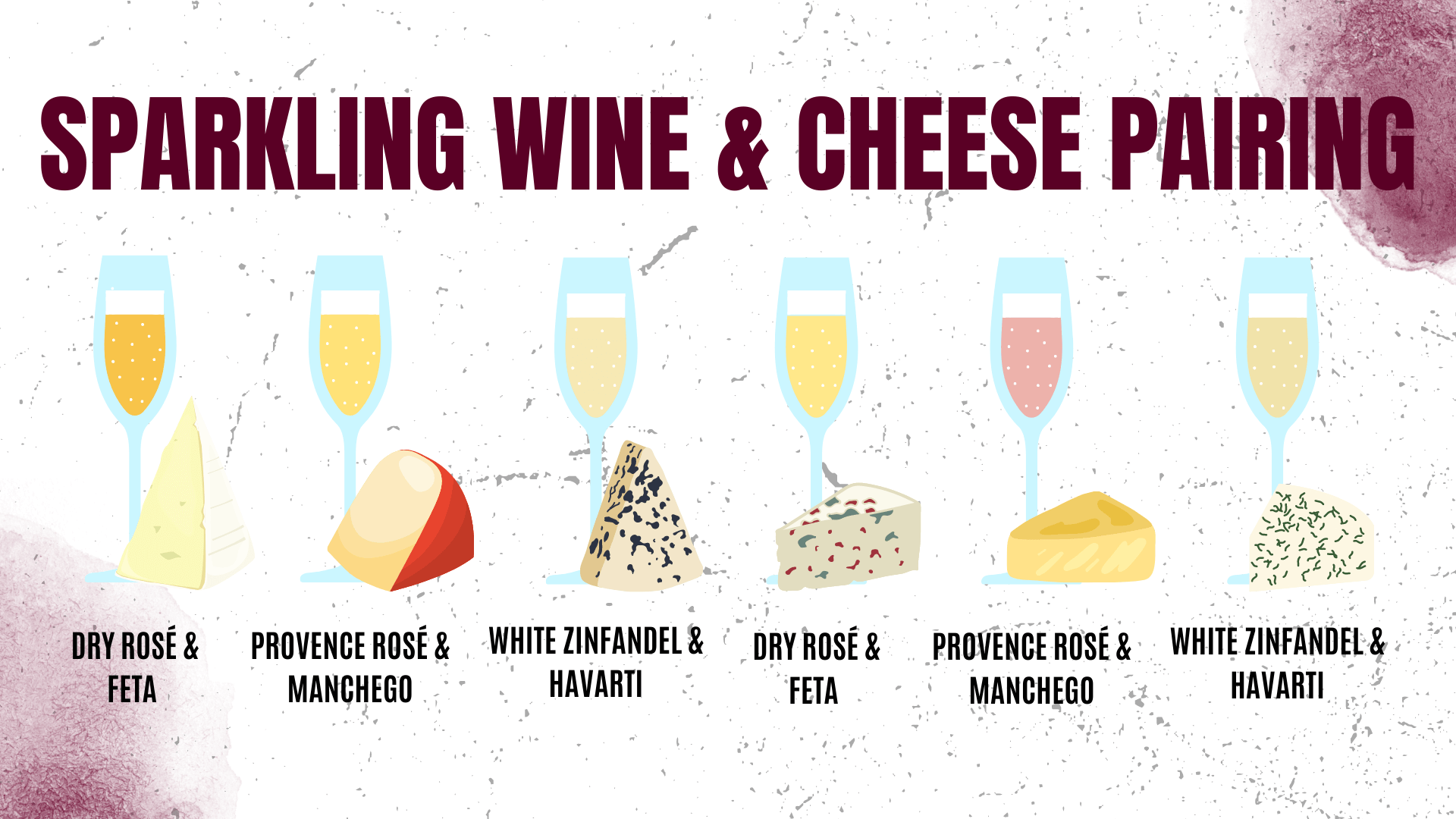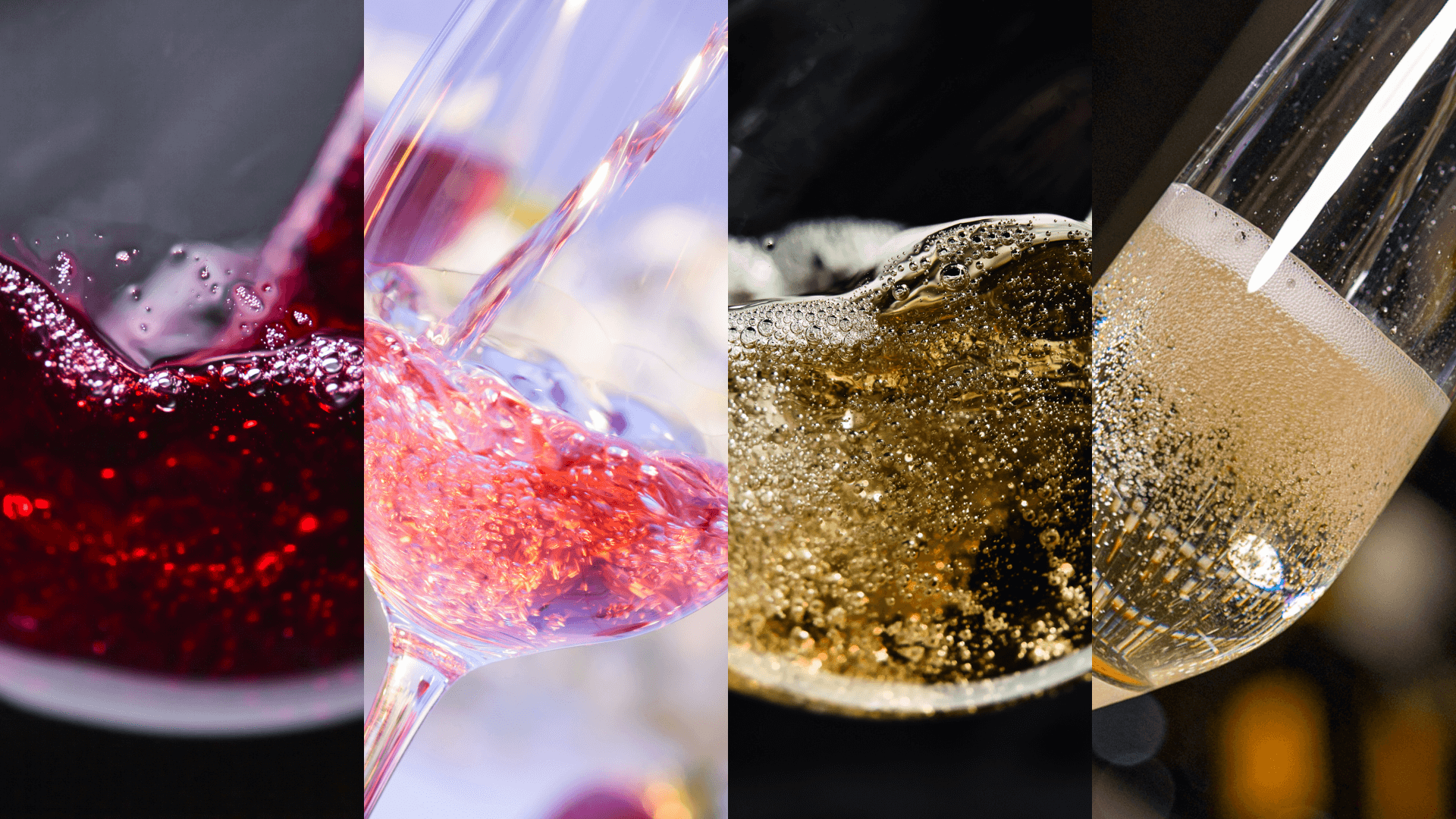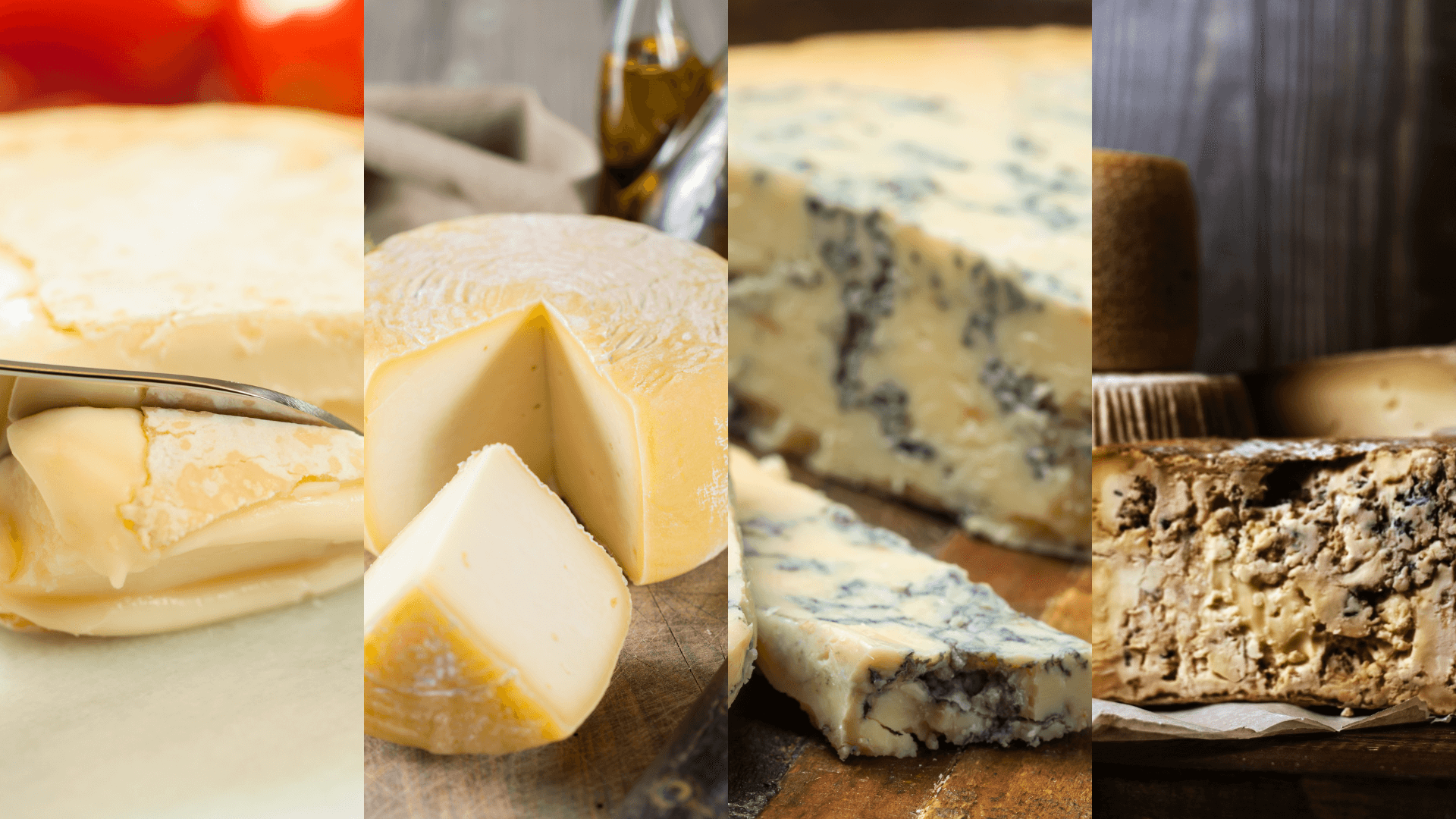Introduction:
Welcome to the ultimate beginner’s guide to wine and cheese pairings! In this comprehensive guide, we’ll explore the concept of pairing the best cheese for wine, delve into the benefits of combining these two culinary delights, and provide you with a deeper understanding of wine and cheese characteristics. By the end of this guide, you’ll have a solid foundation in pairing wine and cheese, allowing you to experiment with confidence.
I. Understanding Wine and Cheese Pairing
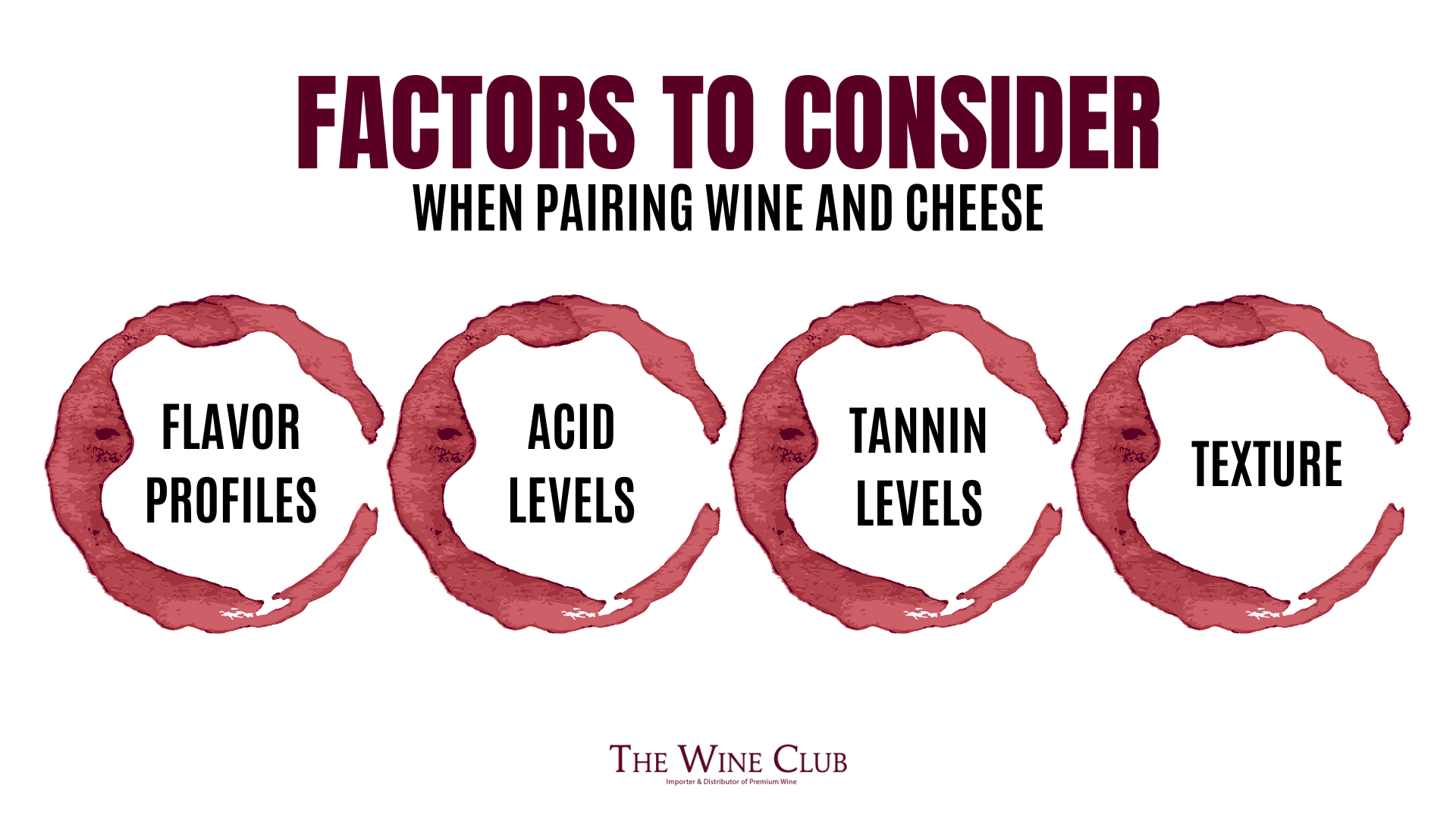
A. Factors to Consider When Pairing Wine and Cheese
- Flavor profiles: Pay attention to the dominant flavors in both the wine and cheese. Seek a balance that complements or contrasts the flavors, ensuring that neither overpowers the other.
- Acid levels: Balance the acidity of the wine and cheese to create a harmonious pairing.
- Tannin levels: Wines with higher tannin levels often benefit from pairing with rich, creamy cheeses that can soften the tannins.Tannins love fat.
- Texture: Pairing wines and cheeses with similar textures can enhance the tasting experience.
B. Common Wine and Cheese Pairing Rules
- Pair by intensity: Match the intensity of the wine with the intensity of the cheese. For example, a bold, full-bodied wine pairs well with a robust, flavorful cheese, while a lighter wine is better suited for a milder, more delicate cheese.
- Pair by region: Wines and cheeses from the same region often have complementary flavors due to similar production techniques and terroir. For instance, an Italian wine might pair beautifully with an Italian cheese.
- Pair similar flavors: Pairing wine and cheese with similar flavor profiles can create a cohesive tasting experience. For example, a buttery Chardonnay may pair well with a creamy Brie cheese, as their similar characteristics will complement each other.
- Pair complementary flavors: Wines and cheeses with complementary flavors can enhance each other’s taste. For instance, a crisp, acidic Sauvignon Blanc can lift the tangy, bright flavors of goat cheese, creating a delightful harmony of flavors.
- Pair contrasting flavors: Contrasting flavors can create an exciting, dynamic tasting experience. For example, a sweet wine like Port can be an excellent match for a salty blue cheese, as their contrasting flavors will balance and enhance one another.
II. Types of Wine and Cheese
A. Types of Wine:
- Red wine: Typically made from dark-colored grape varieties, red wines can range from light and fruity to bold and tannic.
- White wine: Made from green or yellowish-skinned grapes, white wines offer a broad spectrum of flavors, from crisp and citrusy to rich and buttery.
- Rosé wine: Produced from red grapes, rosé wines have a pink hue and can be dry or sweet, with flavors that are generally fruity and floral.
- Sparkling wine: Effervescent wines like Champagne, Prosecco, and Cava are perfect for celebrations and can vary from dry to sweet.
B. Types of Cheese:
- Soft cheese: These creamy, spreadable cheeses, like Brie and Camembert, have a mild flavor and delicate texture.
- Hard cheese: Aged and firm, hard cheeses, such as Cheddar and Parmesan, boast strong, nutty flavors.
- Blue cheese: Known for their distinct blue or green veins, blue cheeses, like Gorgonzola and Roquefort, have a bold, tangy taste.
- Aged cheese: Cheeses like Gouda and Comté become more complex and intense in flavor as they age, developing a firmer texture.
III. Wine and Cheese Pairing Suggestions
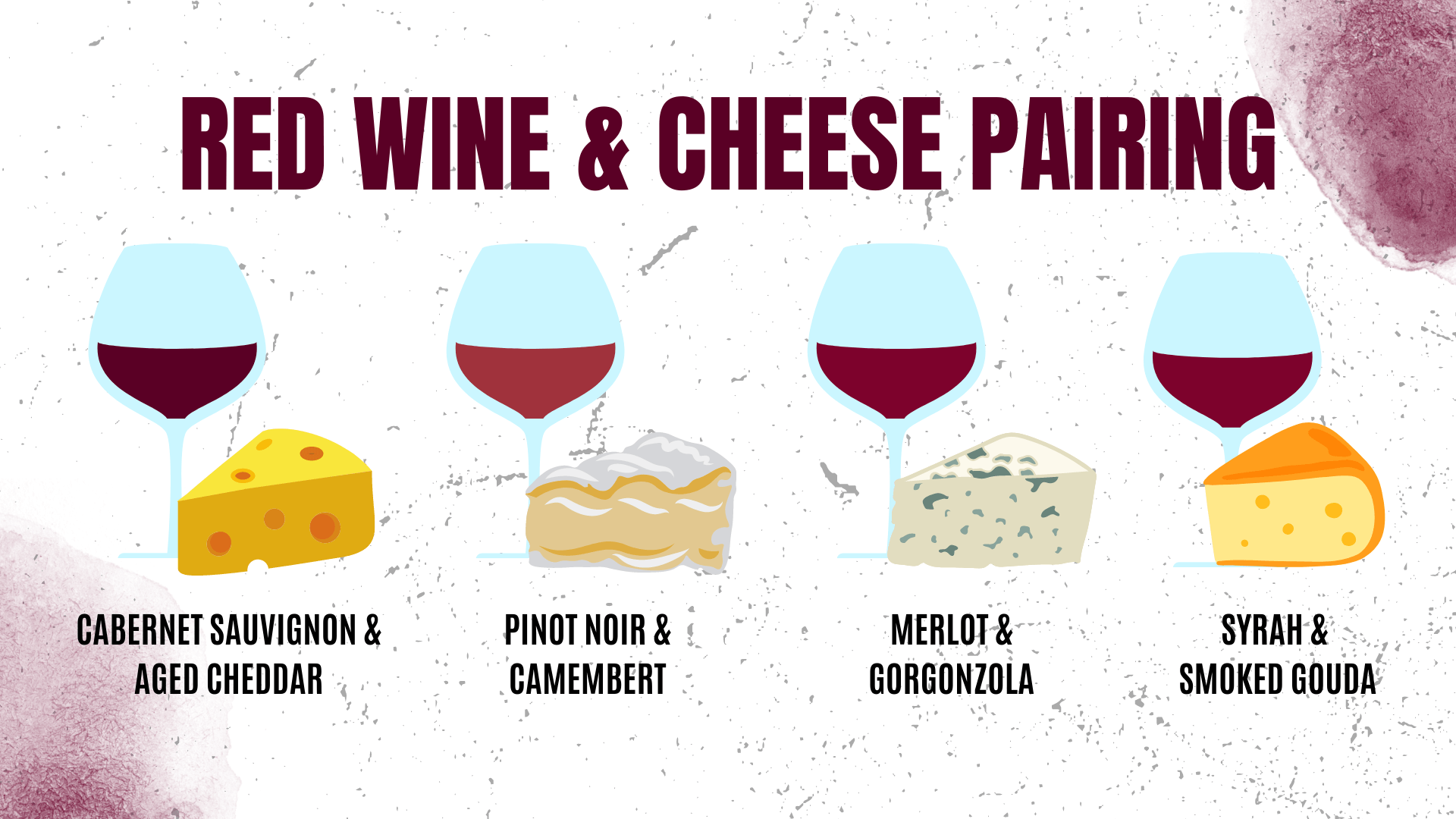
A. Red Wine and Cheese Pairings:
- Cabernet Sauvignon and Aged Cheddar: The bold, full-bodied nature of Cabernet Sauvignon benefits from the strong, nutty flavors of aged cheddar. The cheese’s firm texture complements the wine’s firm tannins, creating a harmonious balance.
- Pinot Noir and Camembert: The delicate, earthy flavors of Pinot Noir are enhanced by the creamy, buttery notes of Camembert. The wine’s bright acidity cuts through the richness of the cheese, resulting in a well-rounded pairing.
- Merlot and Gorgonzola: Merlot’s smooth, fruity character contrasts nicely with Gorgonzola’s bold, tangy flavors. The creaminess of the cheese helps to soften the wine’s tannins, producing a delightful marriage of tastes and textures.
- Syrah and Smoked Gouda: The dark fruit and spicy notes of Syrah pair beautifully with the smoky, nutty flavors of smoked Gouda. The rich texture of the cheese helps to counterbalance the wine’s tannins, creating a pleasing contrast.
B. White Wine and Cheese Pairings:
- Chardonnay and Brie: The buttery, rich flavors of Chardonnay echo the creamy, mild characteristics of Brie. This complementary pairing highlights the wine’s fruity notes and enhances the cheese’s luxurious texture.
- Sauvignon Blanc and Goat Cheese: The crisp, citrusy acidity of Sauvignon Blanc cuts through the tangy, creamy nature of goat cheese, creating a refreshing contrast that cleanses the palate and highlights the wine’s herbaceous qualities.
- Riesling and Gruyère: The fruity sweetness of Riesling is a perfect counterpoint to the nutty, slightly salty flavor of Gruyère. The wine’s acidity helps to balance the richness of the cheese, resulting in a harmonious pairing.
- Gewürztraminer and Roquefort: The aromatic, spicy notes of Gewürztraminer complement the bold, tangy flavors of Roquefort. The wine’s sweetness balances the saltiness of the cheese, creating a dynamic and intriguing taste experience.
C. Rosé Wine and Cheese Pairings:
- Dry Rosé and Feta: The fruity, floral flavors of dry rosé pair well with the briny, tangy taste of feta. The wine’s crisp acidity balances the cheese’s saltiness, creating a refreshing, palate-cleansing combination.
- Provence Rosé and Manchego: The delicate, fruity notes of Provence rosé complement the mild, nutty flavors of Manchego. The wine’s bright acidity provides a pleasant contrast to the cheese’s creamy texture.
- White Zinfandel and Havarti: The off-dry, fruity nature of White Zinfandel is a delightful match for the buttery, mild flavors of Havarti. The wine’s slight sweetness is balanced by the cheese’s creaminess, resulting in a smooth, enjoyable pairing.
D. Sparkling Wine and Cheese Pairings:
- Champagne and Triple Cream Brie: The effervescence of Champagne cuts through the rich, creamy texture of Triple Cream Brie, creating a luxurious, indulgent pairing. The wine’s bright acidity enhances the cheese’s delicate, buttery flavors.
- Prosecco and Aged Gouda: The fruity, slightly sweet notes of Prosecco contrast beautifully with the bold, caramelized flavors of aged Gouda. The wine’s lively bubbles cleanse the palate, providing a refreshing contrast to the cheese’s firm texture.
- Cava and Blue Cheese: The crisp, zesty flavors of Cava work wonderfully with the bold, pungent notes of blue cheese. The sparkling wine’s effervescence helps to cleanse the palate, cutting through the richness of the cheese and balancing its saltiness.
- Crémant and Boursin: The delicate, fruity character of Crémant pairs nicely with the smooth, creamy texture of Boursin. The wine’s fine bubbles and refreshing acidity enhance the cheese’s herbaceous notes, creating a delightful and harmonious pairing.
- Sparkling Rosé and Aged Parmesan: The red fruit flavors and bright acidity of sparkling rosé complement the nutty, savory qualities of aged Parmesan. The effervescence of the wine adds a refreshing contrast to the cheese’s crumbly texture, making for a dynamic and enjoyable pairing.
- Moscato d’Asti and Gorgonzola Dolce: The sweet, fruity notes of Moscato d’Asti pair beautifully with the milder, creamy version of Gorgonzola known as Gorgonzola Dolce. The wine’s gentle bubbles and light sweetness counterbalance the cheese’s tangy, velvety flavors, resulting in a delectable and well-rounded combination.
When you’re unsure about which wine and cheese pairings to choose, these tips will come in handy:
- Balance intensity: Aim to match the intensity of the wine and the cheese. A bold, full-bodied wine pairs well with a robust, flavorful cheese, while a lighter wine is better suited for a milder, more delicate cheese.
- Pair by region: Wines and cheeses from the same region often have complementary flavors due to similar production techniques and terroir. For example, a French wine might pair beautifully with a French cheese.
- Consider acidity: Wines with higher acidity can help cleanse the palate and cut through the richness of creamy or fatty cheeses. Conversely, a rich, buttery cheese can balance the acidity of a crisp white wine.
- Contrast flavors: Don’t be afraid to experiment with contrasting flavors. A sweet wine can pair surprisingly well with a salty or tangy cheese, creating an exciting and dynamic tasting experience.
- Use a cheeseboard: When in doubt, serve a variety of cheeses and wines to allow guests to mix and match and discover their own favorite pairings.
- Seek expert advice: Consult wine and cheese pairing guides, ask for recommendations at your local wine or cheese shop, or attend a wine and cheese pairing event to learn more about which combinations work well together.
- Trust your palate: Ultimately, the best wine and cheese pairing is the one you enjoy the most. As you gain experience and confidence, you’ll discover your own preferences and can use that knowledge to create your own personalized pairings.
IV. Serving Tips:
- Wine Temperature: Serve white wine chilled at around 45-50°F (7-10°C), and red wine slightly below room temperature at 60-65°F (16-18°C). Sparkling wines should be served well-chilled at around 40-45°F (4-7°C).
- Cheese Temperature: Remove cheese from the refrigerator at least 30 minutes to an hour before serving to allow it to reach room temperature. This will help the cheese release its full range of flavors and aromas.
- Glassware: Choose appropriate glassware for each type of wine. White wines are best served in glasses with a smaller bowl, while red wines should be served in glasses with a larger bowl. Sparkling wines are best enjoyed in flutes, which help to preserve the bubbles and focus the aromas.
- Cheeseboard Arrangement: Arrange cheeses on a wooden or marble cheeseboard, providing enough space between each variety. This will prevent the flavors from mixing and make it easier for guests to sample each cheese. Include a separate knife for each cheese to avoid cross-contamination of flavors.
- Accompaniments: Serve a selection of crackers or sliced baguette alongside the cheese. Include a variety of textures and flavors, such as plain crackers, whole-grain crackers, and flavored varieties. Offer additional accompaniments, such as nuts, dried fruits, fresh fruits, olives, and honey, to complement the flavors of the cheeses and wines.
- Labeling: Label each cheese with a small sign or card to help guests identify the different varieties. Include information about the type of cheese, its origin, and any suggested wine pairings.
- Wine Pairing: Offer a range of wine options to provide guests with the opportunity to experiment with different pairings. Start with a few classic pairings and encourage guests to explore new combinations and find their personal preferences.
- Tasting Order: When tasting multiple wines and cheeses, it’s best to start with lighter, more delicate flavors and gradually progress to bolder, more intense ones. This will ensure that the flavors of each pairing are fully appreciated without being overwhelmed by stronger selections.
- Enjoying the Experience: Encourage guests to taste the cheese and wine separately, then together, to appreciate how the flavors interact and enhance one another. Take the time to savor each pairing and discuss the experience with fellow tasters.
- Experimentation: Remember that wine and cheese pairing is a personal and subjective experience. Encourage guests to experiment with different combinations and discover their own favorite pairings.
Conclusion
In this comprehensive guide, we’ve covered the basics of wine and cheese pairing, including the factors to consider, common pairing rules, and the different types of wine and cheese. We’ve also provided several pairing suggestions to help you get started on your journey.
Remember that the art of wine and cheese pairing is subjective, and the best combinations are the ones you enjoy the most. Don’t be afraid to experiment with different pairings, as this is a fantastic way to develop your palate and expand your understanding of these two culinary delights.
As you explore the world of wine and cheese, remember to balance flavors and textures, take inspiration from regional pairings, and consult experts when in doubt. Ultimately, trust your palate and enjoy the process of discovering your own favorite wine and cheese combinations. Cheers to your wine and cheese pairing journey!
Frequently Asked Questions
Wine and cheese are paired together because their flavors and textures often complement each other, enhancing the overall tasting experience.
The basic principles of wine and cheese pairing involve considering factors like flavor profiles, acid levels, tannin levels, and texture to create a harmonious balance.
A good wine and cheese pairing will enhance the flavors of both the wine and the cheese, creating a harmonious and enjoyable tasting experience.
Different types of wine and cheese pair well together based on their flavor profiles, acid levels, tannin levels, and texture. For example, a bold red wine pairs well with a strong, aged cheese.
The best order to serve wine and cheese during a tasting is to start with lighter wines and milder cheeses and progress towards bolder wines and stronger cheeses.
Yes, wine and cheese can also be paired with other foods, such as fruits, nuts, bread, and charcuterie, to create a diverse and enjoyable tasting experience.
Love this topic? Unveil the perfect wine for every dish in our Ultimate Guide to Wine and Food Pairing.


